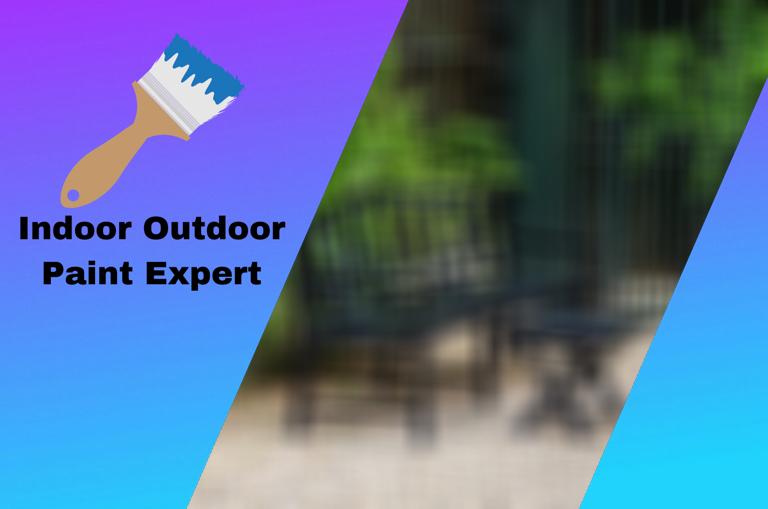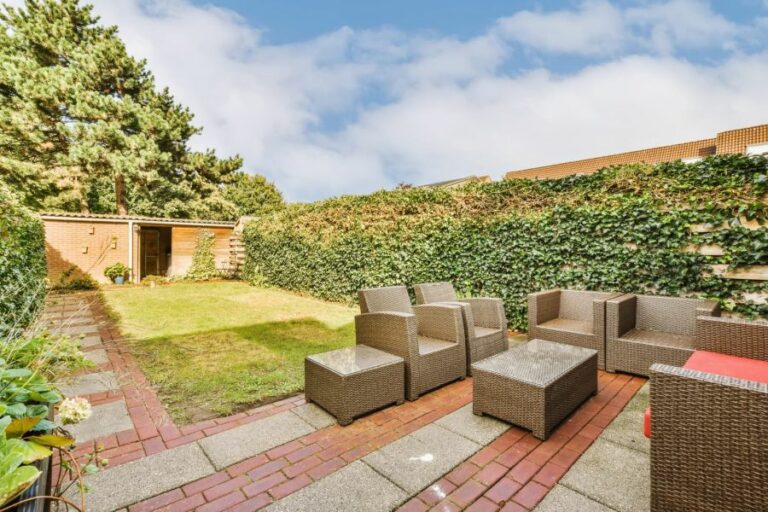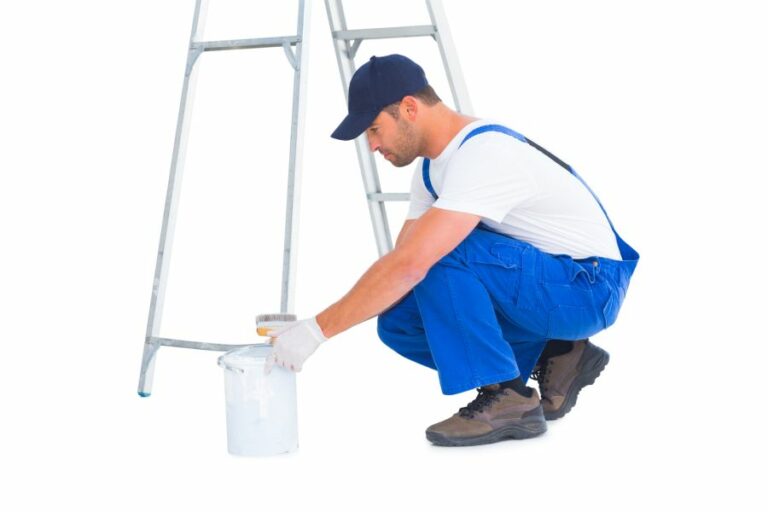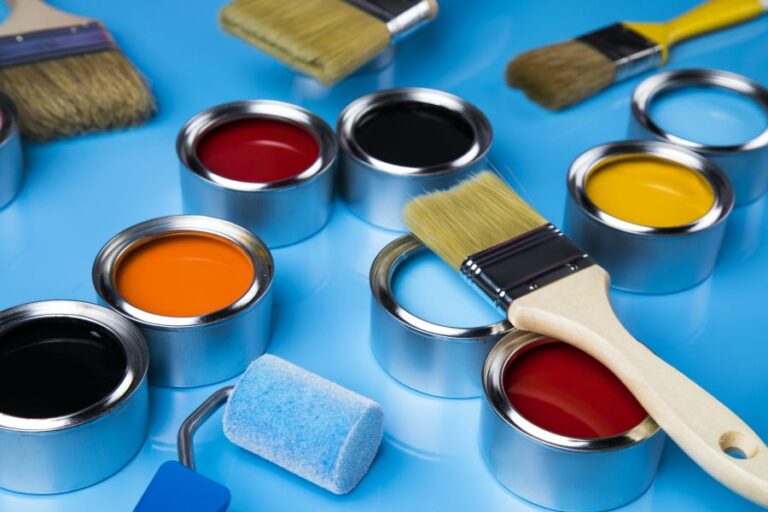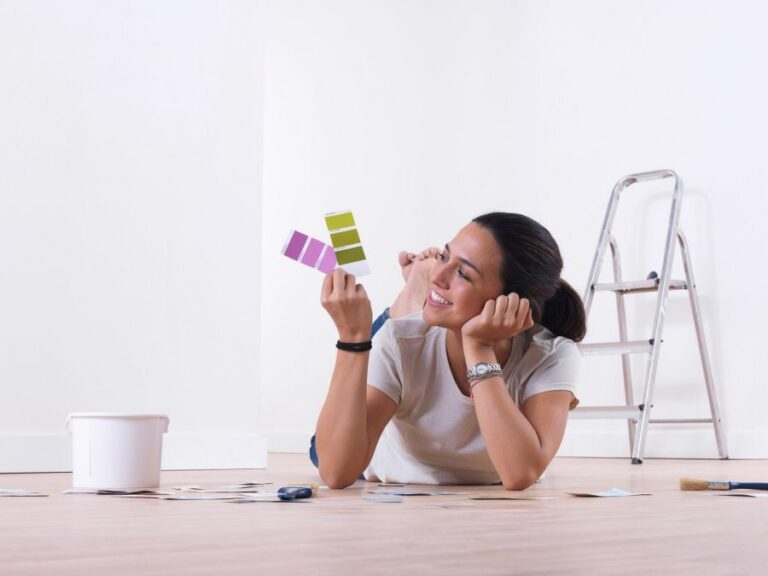Outdoor Waterproof Glow-In-The-Dark Paint. What Pros Say
Are you seeking to add a touch of magic to your outdoor space but unsure of the best solution? Look no further, as we have the perfect answer: outdoor waterproof glow-in-the-dark paint. Creating a fantastic ambiance in your garden, backyard, or even on your camping gear, this innovative product offers limitless possibilities for enhancing your nighttime experiences.
Outdoor waterproof glow-in-the-dark paint:
Outdoor waterproof glow-in-the-dark paint is a phosphorescent paint containing strontium aluminate phosphors. It absorbs light and releases a soft glow, making it ideal for visibility, safety, and decorative purposes. This water-resistant, durable paint is suitable for outdoor use, can withstand various weather conditions, and lasts longer than zinc sulfide-based paints. Popular applications include safety markings, garden decor, and festive decorations. Proper maintenance and exposure to light can ensure its longevity and glowing effect.

Discover the magic of outdoor waterproof glow-in-the-dark paint and transform any space into an enchanting haven. Unleash your creativity and learn how to make your surroundings alive night after night. Keep reading, and let’s go on this illuminating journey together!
Contents
- 1 Outdoor Water-Resistant Luminous Paint for Glow in the Dark Applications
- 2 What is the Durability and Longevity of Outdoor Glow in the Dark Paint?
- 3 Is it Possible to Utilize Glow-in-the-Dark Paint for Outdoor Applications?
- 4 What is the Most Luminous and Longest Enduring Glow-in-the-Dark Paint Available?
- 5 What is the Durability of Rust-Oleum Glow in the Dark Paint?
- 6 Is the Glow-in-the-Dark Effect Effective Outdoors?
Outdoor Water-Resistant Luminous Paint for Glow in the Dark Applications
Glow-in-the-dark paint, also known as phosphorescent paint, has grown in popularity over the past few years.
With applications ranging from home and interior design to party decorations and outdoor recreation, this versatile paint provides a fun and functional way to add a touch of luminescence to various surfaces.
• How Glow-in-the-Dark Paint Works
Glow in the dark paint contains phosphors, which are substances that can absorb light and then slowly release it as a soft, glowing effect. These phosphors are most commonly made from strontium aluminate, which is both safe and provides a longer-lasting glow than its predecessor, zinc sulfide.
Outdoor waterproof glow-in-the-dark paint is specifically designed to be water-resistant and durable, making it suitable for outdoor use. By mixing the phosphors with a waterproof base, the paint can withstand various weather conditions without washing away or losing its glow.
• Popular Applications for Outdoor Waterproof Glow in the Dark Paint
There are numerous ways to use outdoor waterproof glow-in-the-dark paint for both practical and decorative purposes. Here are a few popular applications:
– Safety and Visibility
- Painting house numbers or mailbox numbers for better visibility in the dark
- Applying lines or markings to stairs, walkways, and pathways for added safety
- Outlining the edges of a pool or landscaping features like steps and retaining walls
– Creative Landscaping and Garden Decor
- Creating unique and magical effects with glowing flower pots, statues, and other decorative garden items
- Sculpting or painting artistic features such as murals and designs on exterior walls and fences
- Building fairy gardens with glow-in-the-dark details and accessories
– Festive and Party Decorations
- Keeping campgrounds, backyards, or outdoor event spaces illuminated with glowing paint on tents, chairs, trash cans, and other functional items
- Creating a colorful ambiance for outdoor parties, weddings, or festivals with glowing painted decorations and installations.
- Hosting themed parties or events like glow-in-the-dark egg hunts, scavenger hunts, and capture the flag
• Tips for Using Outdoor Waterproof Glow in the Dark Paint
Here are some recommendations based on personal experience to help you get the most out of your outdoor waterproof glow-in-the-dark paint:
– Proper Surface Preparation
- Clean the surface thoroughly before painting. This step ensures that the paint adheres properly and lasts longer.
- For most surfaces, a primer might be necessary to ensure proper adhesion and longevity. Follow the manufacturer’s instructions when choosing and applying a primer.
– Adequate Lighting for Optimal Glow
The glow-in-the-dark paint needs exposure to light in order to store energy and emit a visible glow. Keep in mind the following points:
- Ensure the painted surface receives sufficient daylight or artificial light. More light exposure usually results in a stronger glow.
- Consider using a UV or black light to enhance the glow effect, especially in areas with limited natural light.
– Painting Techniques and Material Selection
- For more intricate designs and projects, consider using stencils or painter’s tape to achieve clean lines and shapes.
- Some outdoor waterproof glow-in-the-dark paints can be applied using a brush, roller, or airbrush. Follow the manufacturer’s instructions on their recommended application method.
- The American Coatings Association is a useful resource for finding more technical information and guidelines about paints and coatings.
• Maintaining Your Glow in the Dark Paint
Over time, the glow effect of your paint may fade due to weather, pollutants, or other factors. Here are some suggestions to maintain the longevity of your paint:
- Apply a UV-protective clear coat to help preserve the life and glow effect of the paint.
- Regularly clean the surface to remove debris, mold or mildew, and dirt that may hinder the paint’s capacity to absorb light.
- To boost the glow effect, consider installing additional outdoor lighting or using a UV or black light for special occasions.
Outdoor waterproof glow-in-the-dark paint offers countless opportunities for added visibility, safety, and creativity in your outdoor space. With a little planning, know-how, and maintenance, you can ensure your glowing masterpieces last for years to come.
What is the Durability and Longevity of Outdoor Glow in the Dark Paint?
Glow-in-the-dark paint, also known as phosphorescent paint, has the ability to absorb and store light energy and then slowly release this energy in the form of a glow when placed in dark conditions. It has gained popularity over the years for its creative applications in art, crafts, and decorations.
However, when it comes to outdoor scenarios, the longevity, and effectiveness of glow-in-the-dark paint are subject to several factors.
• Factors Affecting the Lifespan of Outdoor Glow in the Dark Paint
The longevity of outdoor glow-in-the-dark paint mainly depends on the following factors:
– Quality of the Paint
High-quality glow-in-the-dark paint will generally last longer than lower-quality alternatives. Higher-quality paints use better ingredients and have more light-absorbing pigments, which can increase the glow time and lifespan of the paint.
To ensure you’re using a high-quality product, consider researching and choosing paints from reputable brands or manufacturers.
– Type of Light-Absorbing Pigment
The longevity of glow-in-the-dark paint largely depends on the type of pigment used. The most common types of pigments found in these paints are:
- Strontium Aluminate: This is a more advanced pigment that is known for a longer, brighter glow. When properly applied in outdoor settings, this pigment can last from 10 to 20 years.
- Zinc Sulfide: This is an older type of pigment found in more affordable glow-in-the-dark paint products. It has a shorter glow time and lifespan compared to strontium aluminate, usually lasting only for a few years.
For outdoor applications, I recommend using paints made with strontium aluminate pigments for a longer-lasting glow.
– Application Process
Your outdoor glow-in-the-dark paint’s lifespan is also influenced by the quality of its application. Here are some factors to consider during the application process:
- Number of Coats: Applying multiple coats of paint can significantly increase its lifespan. I recommend applying at least two to three coats for better results.
- Surface Preparation: Clean and properly prepare the surface before applying the paint. Removing dust, dirt, and grime can help the paint adhere better and last longer.
- primer: Use a primer before applying the glow-in-the-dark paint to improve adhesion and increase the paint’s lifespan.
- Sealer: Apply a protective sealer or clear coat over the glow-in-the-dark paint to help protect it from the elements and increase its outdoor longevity.
– Environmental Conditions
Outdoor glow-in-the-dark paint is exposed to various environmental factors such as sunlight, temperature, humidity, and precipitation. These factors can affect the paint’s ability to glow and its overall lifespan.
Areas with harsher weather conditions may accelerate the degradation of the paint, causing it to lose its glow faster.
• Tips for Extending the Lifespan of Outdoor Glow in the Dark Paint
To maximize the lifespan of outdoor glow-in-the-dark paint, consider implementing the following tips:
- Use high-quality paints made with strontium aluminate pigments for longer-lasting effects.
- Apply multiple coats of paint to strengthen the effect and longevity.
- Properly prepare and prime the surface before applying the paint for better adhesion.
- Protect the paint with a clear sealer or coating to shield it from outdoor elements.
- Regularly clean and maintain the painted surface to help prevent damage and fading.
- Replace or touch up the paint as needed throughout its lifespan to maintain the desired glowing effect.
• In Conclusion
When properly applied using high-quality materials and methods, outdoor glow-in-the-dark paint can last for several years, up to 20 years for paints made with strontium aluminate pigments.
However, its longevity greatly depends on factors such as paint quality, pigment type, application process, and environmental conditions.
For more information about glow-in-the-dark paint and its applications, you can visit The United States Environmental Protection Agency website to get information on safer paint choices and practices.
Type of Paint | Estimated Lifespan |
|---|---|
Water-Based Glow Paint | 2-3 years |
Acrylic Glow Paint | 3-5 years |
Oil-Based Glow Paint | 5-7 years |
Powdered Glow Pigment | 10-15 years |
Factors Affecting Lifespan | Exposure to sunlight, weather conditions, quality of paint, application method |
Is it Possible to Utilize Glow-in-the-Dark Paint for Outdoor Applications?
Glow-in-the-dark paint, also known as phosphorescent paint, has gained immense popularity over the past few years for its ability to emit light in the dark.
This specific paint type contains phosphors that can absorb and store energy from natural or artificial light and emit that energy in the form of a visible glow when in darkness.
Its widespread use in various industries such as entertainment, safety, and even art has led to the question: can you use glow-in-the-dark paint outside? The answer is yes; however, there are a few critical factors to consider for optimal results.
• Types of Glow-in-the-Dark Paint
There are two primary types of glow-in-the-dark paint: water-based and oil-based. The US Environmental Protection Agency (EPA) recommends water-based paints, as they are less likely to cause health issues and environmental problems.
Both types of paint can be used outdoors, but it is essential to understand their characteristics and select the most suitable one based on your specific requirements.
– Water-Based Glow in the Dark Paint
Water-based glow-in-the-dark paint is typically made with acrylic and can be easily applied to various surfaces such as wood, metal, glass, and plastic. It is eco-friendly, non-toxic, and dries quickly. In general, water-based paints can withstand harsh weather conditions and are resistant to fading.
Additionally, cleanup is relatively easy, requiring only water and mild soap. One drawback is that the glow duration and brightness may be lower than that of oil-based counterparts.
– Oil-Based Glow in the Dark Paint
Oil-based glow-in-the-dark paint is made with alkyd resins and can be applied to surfaces including wood, metal, and concrete. It provides a bright, long-lasting glow and adheres more effectively to surfaces than water-based paint.
However, oil-based paints have some downsides, such as longer drying times, more challenging cleanup, and potential harm to the environment or users due to the volatile organic compounds (VOCs) present.
• Factors to Consider for Outdoor Use
Before applying glow-in-the-dark paint outside, consider these key factors to optimize performance and longevity.
– Surface Preparation
Proper surface preparation is crucial to achieve the best possible results. Ensure the surface is clean, dry, and free of dust, dirt, grease, or any other contaminants that may hinder paint adhesion. It may also be necessary to lightly sand, prime, or apply a base coat before applying the glow paint.
– Weather Conditions
Glow-in-the-dark paint performs optimally in dry, cool conditions. Accordingly, avoid painting outdoors during extreme heat, cold, or humidity, as this may affect the paint’s drying time and overall performance. If possible, painting should occur on a mild day with little to no wind.
– Glow Time and Brightness
Outdoor glow-in-the-dark paint’s performance may vary due to factors such as paint type, color, and light source. Keep in mind that the intensity and duration of the glow depend on the amount of light absorbed.
Therefore, the painted surface should have ample exposure to natural or artificial light throughout the day.
• Application and Maintenance Tips
Follow these tips to ensure proper application and maintenance of outdoor glow-in-the-dark paint:
- Read and follow the manufacturer’s instructions on the paint packaging.
- Wear personal protective equipment (PPE) such as gloves, safety glasses, and a mask to avoid potential health issues.
- Use a brush or roller for application, ensuring even and smooth coverage for the best results.
- Apply multiple thin layers, allowing sufficient drying time between coats, to achieve the desired glow intensity.
- Reapply glow-in-the-dark paint every few years or as needed to maintain optimal performance, depending on weather exposure and wear and tear.
- Clean surfaces with mild soap and water to remove dirt and debris to ensure the paint remains effective.
• Conclusion
Glow-in-the-dark paint can indeed be used outdoors, offering various benefits such as increased safety, visibility, and aesthetic appeal.
Choose the appropriate paint type based on your specific requirements, prepare the surface thoroughly, and follow the application and maintenance tips provided to achieve the best results. Glow-in-the-dark paint can transform outdoor spaces, creating unique and functional features that will surely impress.
| Can you use glow-in-the-dark paint outside? | |
|---|---|
| Answer | Yes, you can use glow-in-the-dark paint outside. However, it is important to choose a paint specifically designed for outdoor use to ensure durability and resistance to weather conditions. |
What is the Most Luminous and Longest Enduring Glow-in-the-Dark Paint Available?
Glow-in-the-dark paint is a popular choice for a variety of applications, from creating art projects to enhancing safety in dark areas. This unique type of paint contains phosphorescent pigments that absorb, store, and emit light over time, creating a glow effect when the surrounding area is dark.
Choosing the right glow-in-the-dark paint for your project can be a daunting task, given the numerous options available in the market. In this article, we will delve into the characteristics of the brightest and longest-lasting glow-in-the-dark paints and provide recommendations based on our experience.
• Phosphorescent vs. Fluorescent Paints
Before we dive into the details of the best glow-in-the-dark paint, it’s important to distinguish between phosphorescent and fluorescent paints. Both types of paints emit light, but they do so through different processes.
Phosphorescent paints, also known as glow-in-the-dark paint, contain pigments that absorb light and release it gradually over time. This makes them ideal for applications requiring a sustained glow.
Fluorescent paints, on the other hand, emit light by converting ultraviolet (UV) light into visible light. These paints will only glow when exposed to UV light, like a black light, and are not suitable for providing a sustained glow in the dark.
• Essential Characteristics of the Best Glow in the Dark Paint
To identify the brightest and longest-lasting glow-in-the-dark paint, we must consider the four essential characteristics:
- Glow Duration
- Glow Intensity
- Charge Time
- Lifespan
– Glow Duration
Glow duration refers to the length of time a glow-in-the-dark paint emits light after being exposed to a light source. The longer the glow duration, the more suitable the paint is for applications requiring sustained visibility in the dark.
The best glow-in-the-dark paints offer glow durations of 8-12 hours, depending on the intensity of the glow and the charge time.
– Glow Intensity
The intensity of the glow emitted by a paint depends on the concentration and quality of the phosphorescent pigments used. The brighter the glow, the more visible the paint will be in dark settings. T
o maximize glow intensity, look for paints with a high phosphorescent pigment concentration, preferably made from strontium aluminate.
– Charge Time
The charge time refers to the amount of time it takes for a glow-in-the-dark paint to absorb enough light to produce a visible glow. A shorter charge time is desirable, as it ensures the paint can quickly reach its maximum glow intensity.
Some of the best glow-in-the-dark paints can be charged in a matter of minutes under direct sunlight, while others may take longer depending on the light source used.
– Lifespan
The lifespan of a glow-in-the-dark paint refers to the number of times it can absorb, store, and emit light without losing its glow properties. A long-lasting glow-in-the-dark paint should maintain its glow intensity and duration for multiple years, even with regular exposure to light.
• Our Recommendations for the Brightest and Longest Lasting Glow in the Dark Paint
Based on our understanding of the essential characteristics of glow-in-the-dark paint, we recommend the following options for those seeking the brightest and longest-lasting glow:
- Ultra Green V10 Glow in the Dark Paint: This paint boasts a high phosphorescent pigment concentration made from strontium aluminate, offering a bright glow and the ability to charge within minutes under direct sunlight. With glow durations of up to 12 hours and a lifespan of several years, this paint is an excellent choice for various applications.
- Aurora Bright Green Glow in the Dark Paint: Another strong contender, this paint also uses strontium aluminate pigments, providing an intense glow with quick charging times. With glow durations of 8-10 hours, it’s suitable for both indoor and outdoor projects.
Both of these paints can be found through various retailers, and their performance aligns with the characteristics we’ve identified as essential for the brightest and longest-lasting glow-in-the-dark paint.
• Safety and Environment Considerations
When choosing a glow-in-the-dark paint, it’s crucial to consider the safety of the product, especially if it will be used in a public space, on clothing, or by children. Look for non-toxic, water-based options that are easy to clean and pose minimal risk to users.
Additionally, consider the paint’s environmental impact. Ideally, choose a paint that is eco-friendly and low in volatile organic compounds (VOCs). Some paints may also be biodegradable and derived from renewable resources, further reducing their environmental impact.
• Conclusion
In summary, the brightest and longest-lasting glow-in-the-dark paints contain high-quality phosphorescent pigments, charge quickly, and have a long lifespan. By considering these factors and our recommendations, you can find the perfect glow-in-the-dark paint for your next project or application.
For more information on glow-in-the-dark paint and its various applications, consider visiting the National Institute of Standards and Technology (NIST), which provides resources and research on various luminescent materials and their properties.
What is the Durability of Rust-Oleum Glow in the Dark Paint?
Rust-Oleum glow-in-the-dark paint is a popular product that has found its way into many creative projects, from crafts and DIY decor to safety applications. It is essential to know how long it lasts and how to prolong its longevity to ensure your project continues to shine bright.
• What is Rust-Oleum Glow in Dark Paint?
Rust-Oleum is a well-known manufacturer of various paint products, and their glow-in-the-dark paint is no exception to their high-quality standards. It is a water-based latex paint that glows brightly when exposed to light and then emits this light in the darkness, creating a phosphorescent effect.
You can apply it to a wide range of surfaces, including wood, metal, plastic, and even drywall.
• Lifespan of Glow in The Dark Paint
The longevity of Rust-Oleum glow-in-the-dark paint varies depending on several factors, including the number of coats applied, the surface it’s applied to, and exposure to light for recharging.
On average, Rust-Oleum glow-in-the-dark paint can last between 4-8 hours after proper exposure to light, with some gradual loss of glow during this period.
However, the actual lifespan of the paint can vary significantly depending on the environment and how well you maintain the paint. For instance, if the paint is exposed to harsh weather conditions such as direct sunlight, rain, or high humidity, the glow may fade more quickly.
In contrast, a controlled indoor environment may allow for a brighter and longer-lasting glow.
– Effect of Application Techniques
The number of coats applied, and the thickness of each layer can significantly impact the paint’s longevity. Rust-Oleum recommends applying at least two coats for optimal results, but you can apply additional layers for a more vigorous and longer-lasting glow.
However, keep in mind that applying too many coats may result in a visible texture difference on the surface due to paint thickness.
– Importance of Light Exposure
Rust-Oleum glow-in-the-dark paint relies on exposure to light to recharge its glow. The more light the paint is exposed to, the brighter and longer-lasting the glow will be.
Ideally, you should expose the surface to either direct sunlight or a high-intensity artificial light source for 1-2 hours a day to maintain the glow’s intensity.
– Impact of Surface Conditions
The surface material and its condition can also affect the paint’s ability to glow brightly and retain its glow. For best results, apply Rust-Oleum glow-in-the-dark paint on clean, dry, and lightly sanded surfaces.
This will ensure the paint adheres to the surface better and is not prematurely peeled off due to trapped moisture, dirt, or other imperfections.
• Tips for Maintaining and Recharging Glow
To get the most out of your Rust-Oleum glow in the dark paint, follow these recommendations for maintaining and recharging the glow:
- Ensure proper light exposure: Make sure the painted surface is exposed to direct sunlight or a strong artificial light source for at least 1-2 hours daily to recharge the glow.
- Keep the surface clean: Regularly clean the painted surface to remove any dirt, dust, or grease that may dull the glow.
- Protect the surface: Apply a clear sealer or varnish to help protect the painted surface in outdoor or high-traffic areas, improving longevity.
- Consider reapplication: If the glow starts to fade significantly, consider applying additional coats to revive the original brightness.
• Precautions When Applying and Using Rust-Oleum Glow in The Dark Paint
To ensure the safe and optimal use of Rust-Oleum glow-in-the-dark paint, keep the following precautions in mind:
- Stir the paint well before and during application to ensure an even distribution of glowing particles.
- Apply the paint in a well-ventilated space to prevent inhalation of paint fumes.
- Use a respirator and gloves when applying the paint, especially if you are sensitive to paint fumes or have skin allergies.
- Follow the manufacturer’s drying time guidelines and avoid touching or using the painted surface until it is completely dry.
- Keep the paint out of reach of children and pets.
• Conclusion
Rust-Oleum glow-in-the-dark paint can serve as a creative decorative element or a functional safety feature in various applications. The paint’s longevity depends on several factors, such as the application technique, surface condition, and exposure to light.
By following the guidelines and recommendations in this article, you can ensure your glowing masterpiece lasts for as long as possible. For more information on Rust-Oleum products and their application, visit the official Rust-Oleum website.
Is the Glow-in-the-Dark Effect Effective Outdoors?
One of the most intriguing phenomena in the world of colors and light is the concept of glow-in-the-dark materials. These materials have found great use in various applications, such as toys, decoration items, and even safety signs.
Many people, however, are curious – does glow-in-the-dark work outside? In this article, let’s dive deeper into this question and explore what factors can affect the performance of glow-in-the-dark items when placed outdoors.
• Understanding Glow in the Dark Materials
The secret behind glow-in-the-dark materials lies in a unique characteristic called phosphorescence. This property allows certain materials to absorb light energy and then re-emit it in the form of a soft, visible glow.
The most commonly used element to achieve this effect is strontium aluminate, which is often mixed with a binder to create paint or added to plastic materials.
• Factors Affecting Glow in the Dark Performance Outdoors
Several factors can affect the performance of glow-in-the-dark materials when placed outside, ranging from the source of light charging the material to the surrounding environment.
– Light Source Limitations Sun versus Artificial Light
Glow-in-the-dark materials need a light source to absorb energy from and “charge” the phosphorescent crystals within the paint or material. Outdoor settings often mean that the primary source of light is natural sunlight.
Sunlight provides ample energy for glow-in-the-dark materials to charge effectively. However, keep in mind that direct sunlight can also be a double-edged sword. Prolonged exposure to UV radiation from the sun can decrease the phosphorescent material’s lifespan and reduce its overall performance.
Artificial lighting used outdoors, such as fluorescent and LED lights, can also effectively charge these materials and typically have less impact on the material’s lifespan.
– Weather Conditions and Environmental Factors
Glow-in-the-dark materials used outdoors will inevitably be exposed to various weather conditions, such as rain, wind, and temperature fluctuations. These factors can affect the effectiveness of the glow in the following ways:
- Rain: Prolonged exposure to moisture can cause the binder in the glow-in-the-dark paint to degrade, leading to reduced glow and potentially flaking off the material’s surface. Using a waterproof sealer or moisture-resistant paint can help mitigate this issue.
- Wind: Strong winds can introduce dust or debris that covers the surface of the glow-in-the-dark material, reducing its ability to absorb and emit light effectively. To maintain the optimal glow, ensure the material is frequently cleaned to remove any accumulated grime.
- Temperature: While extreme hot or cold temperatures won’t have a direct impact on the glow, they can affect the binder or base material. For instance, extreme heat can cause the paint to crack or peel, while freezing temperatures can make certain plastics brittle.
– Material Durability
Choosing the right glow-in-the-dark material can significantly influence its effectiveness when used outdoors. Some materials are designed specifically to withstand outdoor conditions and last longer, while others may degrade quickly under continuous exposure.
Ideal materials for outdoor use include:
- High-quality glow-in-the-dark paint with a suitable binder
- Water-resistant/resilient plastic materials
- Wood or metal surfaces that have been properly sealed and prepared
Always follow the manufacturer’s guidelines regarding suitable surfaces and outdoor usage for the specific product you are working with.
• Expert Recommendations for Glow in the Dark Use Outdoors
Based on my personal experience and in-depth understanding of glow-in-the-dark materials, here are a few recommendations for those planning to use glow-in-the-dark items outside:
- Proper Charging: Ensure the glow-in-the-dark material receives enough sunlight or artificial light to achieve a satisfactory glow when it gets dark. The charging time will depend on the product and the light source, so follow the manufacturer’s guidelines.
- Maintain and Clean: Regular maintenance is essential to keep your glow-in-the-dark materials in top shape. Clean off dirt, dust, and debris to ensure the material can absorb light effectively.
- Environmental Protection: Protect your glow-in-the-dark items from harsh weather conditions by using sealers, and weather-resistant paints or by placing them in sheltered areas.
- Choose High-Quality Materials: Opt for glow-in-the-dark materials designed specifically for outdoor use, or use materials that are more resilient to environmental factors.
By following these recommendations and being mindful of the factors affecting the performance of glow-in-the-dark materials outdoors, you can expect a long-lasting and impressive glow from your items.
For further information and resources on glow-in-the-dark materials, you can visit the Chemistry Department at UC Davis, which provides an excellent guide to understanding phosphorescence and material properties.
So, to answer the initial question, yes, glow-in-the-dark can work outside, but it depends on various factors and how well you address them to ensure optimal performance.

